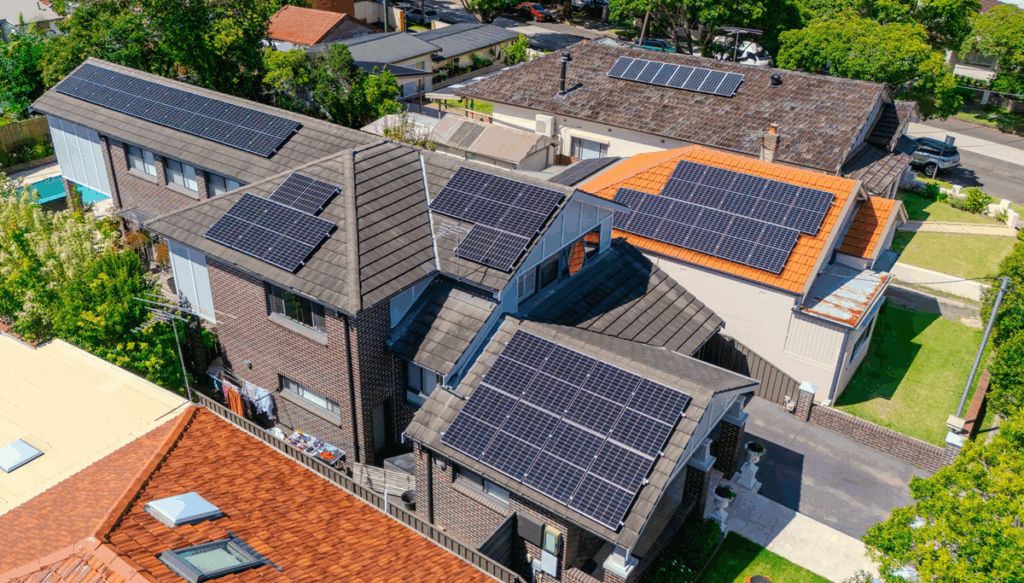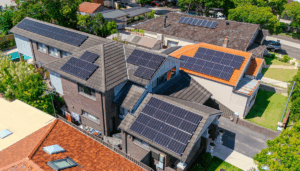
Australia stands at the forefront of global rooftop solar adoption, with an impressive total of 4.2 million systems installed by June 2025. This expansion translates to a remarkable 26.8 gigawatts of clean power feeding directly into local electricity networks. While this increase in sustainable energy significantly reduces carbon emissions, it also presents new challenges for electricity grid operators. The transition from fossil fuel dependency to renewable energy sources introduces complexities in managing electricity flow.
Dr. Julio Braslavsky, Senior Principal Research Scientist at the Commonwealth Scientific and Industrial Research Organisation (CSIRO), highlights a critical issue facing local networks: the emergence of significant fluctuations in power flows, likened to tidal patterns. “In the evenings, homes typically consume power from large generation plants, such as wind farms and gas-fired plants. We can call this the ‘low-tide’ period for local electricity grids,” he explained. Conversely, during sunny afternoons, approximately 40% of Australian homes generate surplus power from rooftop solar systems. This excess energy is then exported back to the grid, creating a ‘high-tide’ scenario where local electricity demand can be fully met by solar generation, particularly evident in South Australia.
These tidal shifts can strain local network operations, often pushing them to their limits. In fact, during peak solar generation, South Australia has experienced periods where its entire electricity demand is satisfied entirely by rooftop solar. Dr. Braslavsky notes that one of the underlying issues is a phenomenon known as phase imbalance. This occurs when uneven power flows through the three-phase systems of utility poles and wires lead to inefficiencies and potential safety hazards. “Phase imbalance is a common characteristic of local network operation, but it becomes more pronounced with the large swings in power from rooftop solar,” he stated.
To address this challenge, CSIRO researchers partnered with X (the innovation lab formerly known as Google X) in 2023 through a project named Tapestry. Their objective? To explore smart inverter technology that can balance grid operations in real-time. This innovation aims to minimize the impacts of fluctuating power flows while allowing for increased connectivity of rooftop solar, home batteries, and electric vehicle charging stations.
Inverters, which convert direct current (DC) electricity from solar panels into alternating current (AC) used in homes and on the grid, are evolving to do more than just conversion. Modern smart inverters can actively manage electricity flow within the network. “Through our collaboration with X, we are developing innovative designs for smart grid inverters that can address phase imbalance in real-time,” Dr. Braslavsky noted.
This technology holds implications beyond Australia’s borders. In October 2024, CSIRO showcased its smart inverter technology to energy leaders in Southeast Asia, including representatives from Indonesia’s state-owned utility PLN. Indonesia faces similar challenges with inefficiencies and safety concerns stemming from phase imbalance in its distribution networks. PLN expressed a keen interest in collaborating with CSIRO to prototype an inverter that could enhance the capacity for rooftop solar and other consumer energy resources.
Dr. Braslavsky explained, “The partnership, funded by Australia’s Department of Foreign Affairs and Trade, aims to demonstrate how smart inverters can alleviate congestion, bolster infrastructure efficiency, and support electricity decarbonisation.” The project entails designing and testing a solid-state inverter capable of dynamically rebalancing electricity flows based on real-world data from both Indonesian and Australian networks.
As part of this initiative, the team conducts workshops and lab visits to share insights and refine technology. They are also considering field trials to validate the inverter’s performance in live network conditions. To ensure the effectiveness of these smart inverters, the research team is creating detailed computer models and conducting lab tests. These simulations assess how the inverters respond to variable solar generation and sudden shifts in electricity demand.
One promising outcome from these simulations indicates that simplified inverter architectures could mitigate phase imbalance by supplying corrective currents. This finding opens avenues for cost-effective solutions that could be widely implemented throughout the grid. The team has already achieved success in low-power lab tests and is gearing up for high-power trials at CSIRO’s Energy Centre in Newcastle.
Looking ahead, the next steps involve real-time hardware-in-the-loop testing using scenarios from Indonesian networks. This will be followed by a joint technical report and potential demonstrations in field settings. If successful, these innovations could pave the way for Australia and Indonesia to integrate more rooftop solar into their energy systems without sacrificing reliability.
By 2050, Australia’s rooftop solar capacity is projected to soar to 72 gigawatts, with nearly 80% of detached homes in the National Electricity Market (NEM) expected to have solar panels. The smart inverters being developed through this project will play a crucial role in achieving this ambitious future.
This article was originally published online in Energy Magazine.







